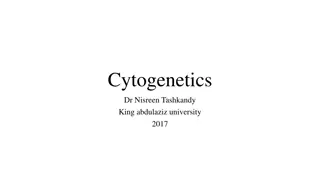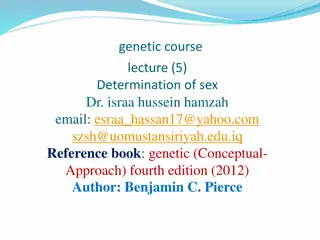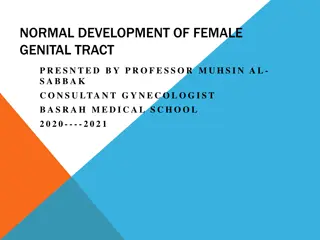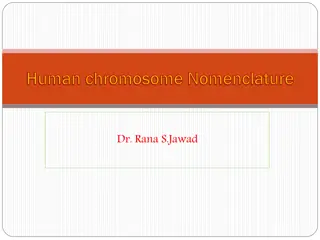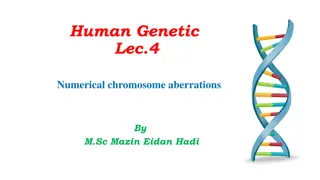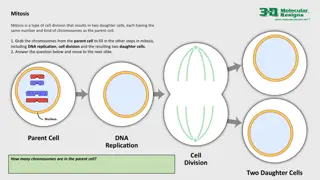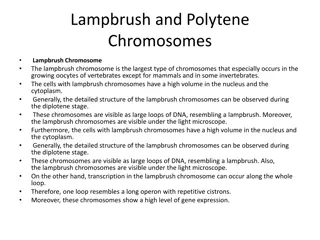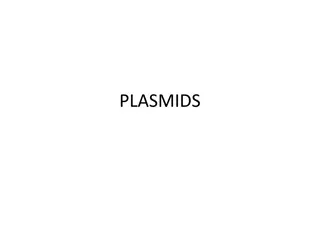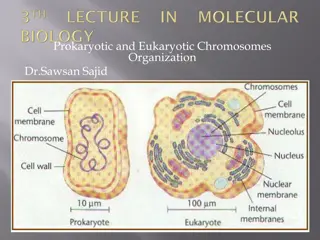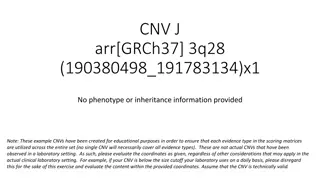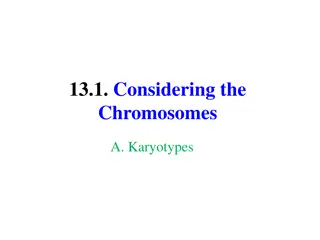Understanding the Chromosome Theory of Sex Determination
The concept of sex differentiation in organisms, the role of gamete size, hermaphroditism vs. dioecious species, and the chromosome theory of inheritance are explored. Discover how the presence of specific chromosomes determines sex in insects and how individual genes on sex chromosomes impact sexual phenotypes.
Download Presentation

Please find below an Image/Link to download the presentation.
The content on the website is provided AS IS for your information and personal use only. It may not be sold, licensed, or shared on other websites without obtaining consent from the author. Download presentation by click this link. If you encounter any issues during the download, it is possible that the publisher has removed the file from their server.
E N D
Presentation Transcript
The term sex Most phenotypes: male difference between males and females is gamete size: males produce relatively larger sex refers to sexual phenotype. organisms male and Most organisms have female. . The fundamental only two sexual and female males produce produce small larger gametes small gametes gametes. . gametes; females
There are many ways in which sex differences arise. In some species, both sexes are present in the hermaphroditism male and female reproductive structures are said to be monoecious Species in which the organism has either male or female reproductive structures are said to be dioecious dioecious. Among dioecious species, sex may be determined environmentally. same organism, a condition that termed both hermaphroditism; ; organisms bear monoecious (meaning (meaning one one house ) house ). . dioecious (meaning (meaning two two houses ) houses ). . Humans are chromosomally, genetically, or
The chromosome theory of inheritance that genes are located on chromosomes, which serve as vehicles for the segregation of genes in meiosis. Definitive proof of this theory was provided by the discovery that the sex of certain insects determined by the presence or absence of particular chromosomes. chromosome theory of inheritance states sex of certain insects is
In 1905 demonstrated that, in insects, chromosomes, single number of chromosomes in the cells of males and females but saw that one chromosome pair was different: two X chromosomes were found in female cells, whereas a single X chromosome plus a smaller chromosome, which they called Y, was found in male cells. 1905, Nettie Nettie Stevens Stevens and Edmund in grasshoppers cells whereas the Edmund Wilson Wilson grasshoppers and other females the cells the of have of males two have a a two X X chromosomes, whereas single X X. . In some insects, they counted the same cells of males have
As Stevens and Wilson found for insects, sex in many organisms is determined by a pair of chromosomes, the sex differ between males and females. The nonsex chromosomes, which are the same for males and females, are called autosomes We think of sex in these organisms as being determined chromosomes, but, in fact, the individual genes located on the sex chromosomes are usually responsible for the sexual phenotypes. sex chromosomes, chromosomes, which autosomes. . by the presence of the sex
The mechanism of sex determination in the grasshoppers studied by McClung is one of the simplest determination and is called the XX-XO system. In this system, females (XX), (XO) signifies the absence of a sex chromosome. mechanisms of chromosomal sex females have males possess have two single X X chromosome two X X chromosomes chromosome chromosomes (XX), and males (XO). . There is no O chromosome; the letter O possess a a single
Because males produce two different types of gametes with respect to the sex chromosomes, they are said to be the heterogametic sex. Females, which produce gametes that are all the same with respect to the sex chromosomes, are the homogametic sex. heterogametic sex. homogametic sex.
In many species, the cells of males and females have the same number of chromosomes, but the cells of females and chromosome and a smaller sex chromosome, the Y Y chromosome Many organisms, including some plants, insects, and humans), system. females have the have two of two X X chromosomes males chromosomes (XX) have (XX) cells a single X chromosome (XY) (XY). . reptiles, and all mammals XX-XY (including have the sex-determining
In this system, the female the male Females of the eggs have a Z chromosome and the other half have a W chromosome. Males chromosome. The ZZ-ZW system is found in birds, snakes, butterflies, some amphibians, and some fishes. female is is heterogametic homogametic. . Females in this system are ZW heterogametic and male is is homogametic ZW; after meiosis, half Males are are ZZ ZZ; all sperm contain a single Z
In some plants, fungi, and protozoans, sex is genetically determined, but there are no obvious differences in the chromosomes of males and females: there are no These organisms have genic genotypes at one or more loci determine the sex of an individual plant, fungus, or protozoan. no sex sex chromosomes genic sex chromosomes. . sex determination determination; ;
It is important to understand that, even in chromosomal sex-determining systems, sex is actually determined by example, in mammals, a gene (SRY) located on the phenotype. In chromosomal sex determination, sex by chromosomal chromosomes females individual individual genes genes. For Y chromosome determines the male In both both genic sex determination sex is is controlled and controlled by individual genes; ; the difference is that, with sex chromosomes also females. . individual genes determination, look different the and also look different in in males males and
A fascinating example of environmental sex determination is seen in the marine mollusk Crepidula fornicata, also known as the common slipper limpet. Environmental factors are also important in determining sex in many reptiles. Although most snakes and lizards have sex chromosomes, the sexual phenotype of many turtles, crocodiles, and alligators is affected by temperature during embryonic development.
Each limpet begins life as a swimming larva. The first larva to settle on a solid, unoccupied substrate develops into a female limpet. It then produces chemicals that attract other larvae, which settle on top of it. These larvae develop into males, which then serve as mates for the limpet below. After a period of time, the males on top develop into females and, in turn, attract additional larvae that settle on top of the stack, develop into males, and serve as mates for the limpets under them.
Limpets can form stacks of a dozen or more animals; the uppermost animals are always male. This type of sexual development is called sequential animal can be both male and female, although not at the same time. In environmentally by the limpet s position in the stack. sequential hermaphroditism hermaphroditism; ; each individual Crepidula fornicata, sex is determined
In turtles, for example, warm temperatures produce females during certain times of the year, whereas cool temperatures produce males. In alligators, the reverse is true.




